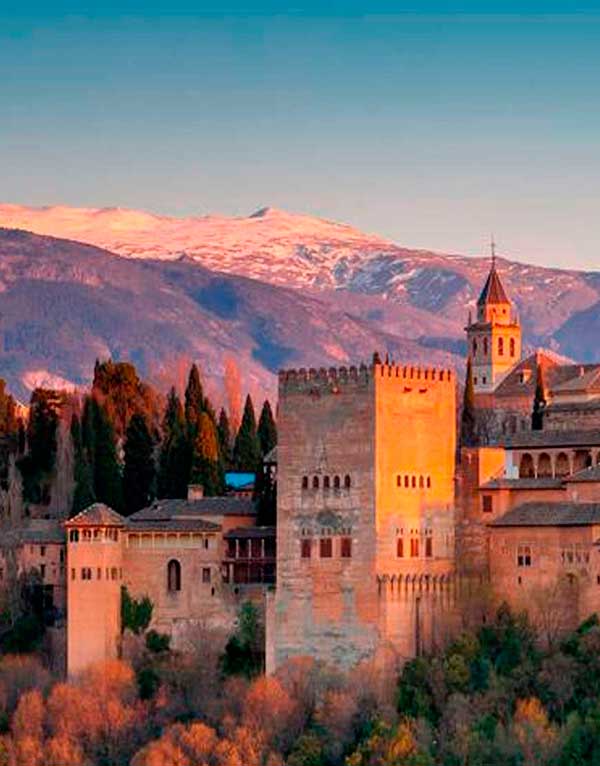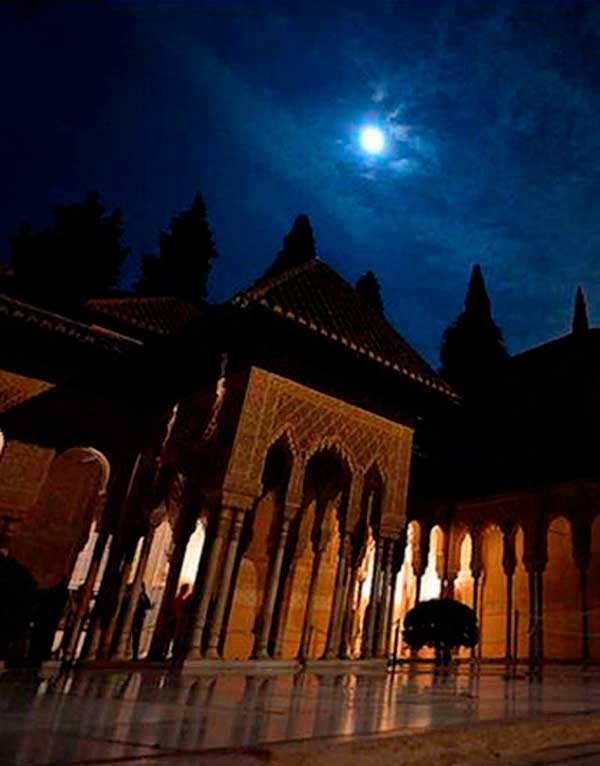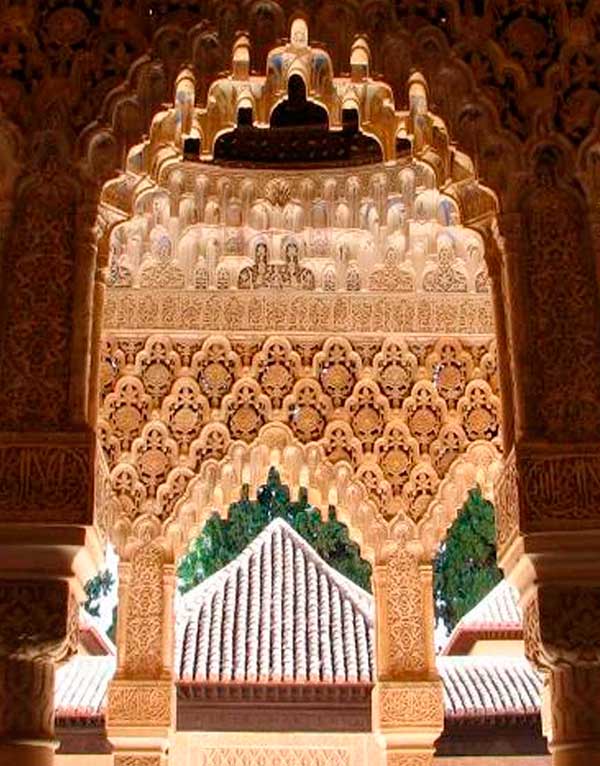HISTORY OF THE ALHAMBRA OF GRANADA
The history of the Alhambra is linked to the geographical location where it is located, Granada; On a rocky hill of difficult access, on the banks of the river Darro, protected by the mountains and surrounded by forest, among the oldest districts of the city, the Alhambra rises like an imposing castle of reddish tones in its walls that hide to the Exterior the delicate beauty of its interior.
Designed as a military zone at the beginning, the Alhambra became the royal residence and court of Granada in the mid-13th century after the establishment of the Nasrid Kingdom and the construction of the first palace by the founding king Mohammed ibn Yusuf Ben Nasr, better known as Alhamar.Throughout the s. XIII, XIV and XV, the fortress becomes a citadel of high walls and defensive towers, which houses two main areas: the military zone or Alcazaba, barracks of the royal guard, and the medina or palatine city, where the famous Nasrid Palaces and the remains of the houses of nobles and plebeians who lived there. The Palace of Carlos V , (built after the city was seized in 1492 by the Catholic Monarchs) , Is also in the medina.
The monumental complex also has an independent palace in front of the Alhambra, surrounded by orchards and gardens, which was the solace of the Granadine kings, The Generalife .
The name Alhambra has its origins in in an Arabic word meaning "red castle or vermilion", perhaps due to the color tone of the towers and walls that completely surround the hill of La Sabica, which under the light of the stars is Of silver color, but in the light of the sun acquires a golden tone. Although there is a more poetic explanation, narrated by the Muslim chroniclers who talk about the construction of the Alhambra "under the light of the torches." Created originally for military purposes, the Alhambra was a fortress, a palace and a small medina, all at the same time. This triple character helps us understand the many characteristics of this monument.
There is no reference to the Alhambra as a residence of kings until the 13th century, although fortification has existed since the 9th century. The first kings of Granada, the Zirtians, had their castles and palaces in the hills of Albaicin, and nothing remains of them. The monarchs Ziries were in all probability the emirs who built the Alhambra, beginning in 1238.
The founder of the dynasty, Muhammed Al-Ahmar, began with the restoration of the old fort. His work was completed by his son Muhammed II, whose immediate successors continued the repairs. The construction of the palaces (called Casa Real Vieja) dates back to the 14th century and is the work of two great kings: Yusuf I and Muhammed V. The first is awarded, among others, the Fourth Comares, the Door of Justice , The Baths and some towers. His son, Muhammed V, completed the beautification of the palaces with the Hall of Lions, in addition to other rooms and fortifications.
The Alhambra became a Christian court in 1492 when the Catholic Monarchs conquered Granada. Later, several structures were built to house prominent citizens, military barracks, a Church and a Franciscan Monastery.







0 Comments